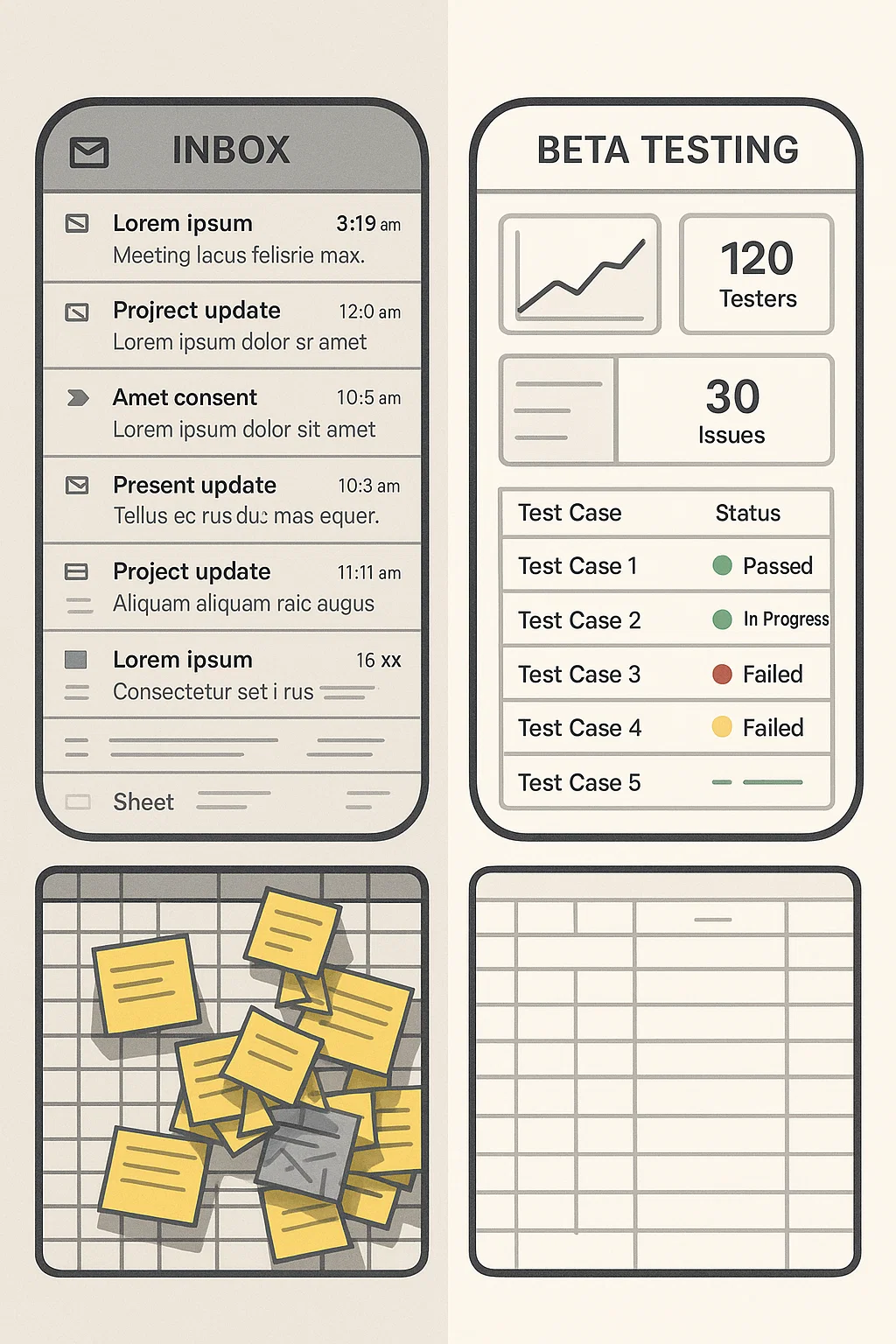If you're managing a beta testing program with email threads and spreadsheets, you're not alone—and you're not to blame. For years, product teams have hacked together manual systems to manage feedback, coordinate testers, and track insights. But here's the hard truth:
Those tools are breaking your beta testing process.
They may be familiar, but they're not fit for purpose in today’s fast-moving, feedback-driven product environments. And worse—they’re likely costing you valuable insights, frustrating your testers, and delaying your go-to-market timelines.
Let’s break down the problem, and what a better approach looks like.
Most beta programs rely heavily on email to communicate with testers, send instructions, or nudge for feedback. While it’s ubiquitous, it’s also a mess:
- Fragmented Communication
- Lack of Structure
- Don't scale
Spreadsheets are so powerful they became the default action for almost anything operations related. But spreadsheets lack fundamental features:
- Not Built for Collaboration at the scale of a Beta program
- No Real-Time Insights
- High Risk of Human Error
Manual systems mean delayed product validation, lower engagement, missed insights, and limited scalability.

Product teams can benefit tremendously from purpose-built Beta management tool:
- Structured workflows
- Centralized feedback
- Automated follow-ups
- Dashboards and analytics
- Scalability
But like anything tasked for product teams, It’s Not Just About Tools—It’s About Outcomes:
- Launch faster by streamlining the process
- Engage testers much more effectively by making their lives easier
- Build trust across the organization armed with data
- Standardize beta testing!
Ready for a Better Way? 🚀
Ayham Ereksousi
Co-Founder CEO